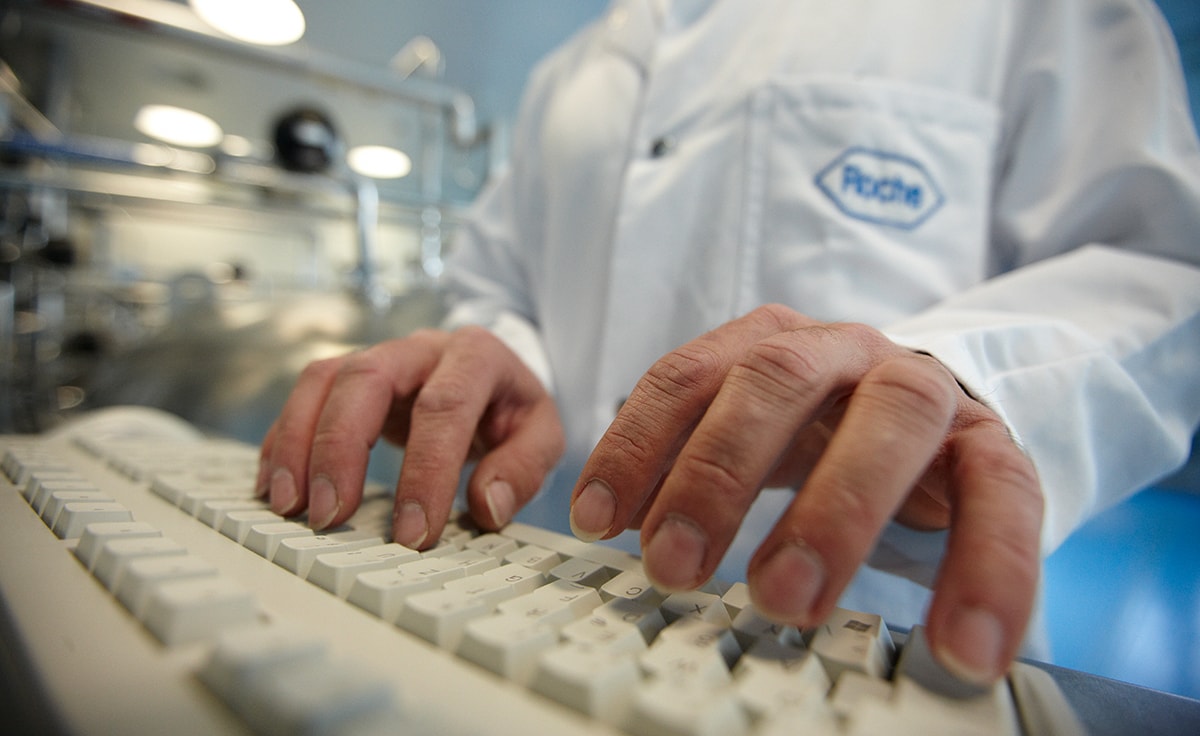Laboratories are currently operating in one of the most challenging environments to date. Infectious outbreaks and natural disasters (which are increasingly severe2 and prevalent3) have made it clear that disruption is the new normal. All this attests to the fact that the medical diagnostics industry is currently facing pressure to do more with less — from resources and budget, to staffing and time. Here are some of the solutions to ensure that healthcare systems keep functioning in an increasingly unpredictable world.
Less Physical, More Digital
One solution is to rethink our reliance on physical infrastructure. Going at least partially digital will make laboratories more agile and resilient when responding to emergencies.
Take natural disasters for example. Laboratories, crucial to testing and often carrying priceless samples, run the risk of being damaged or destroyed in earthquakes, hurricanes or other natural disasters — not only setting research back but also taking a huge psychological and emotional toll on the medical and research professionals involved.4 Natural disasters can also cause disease outbreaks in their aftermath,5 adding strain to an already burdened healthcare infrastructure.6
Instead of reactively picking up the pieces post-disaster (a common occurrence7), we can move away from this vicious cycle of “disaster-respond-rebuild-repeat”8 by adopting digital processes in anticipation of disruption.
Related reading: The Making of a Fit-for-purpose Digital Health Ecosystem
Dr Robert Yoshiyuki Osamura, MD/PhD, Chief of the Diagnostic Pathology Department at Nippon Koukan Hospital in Japan and President of the International Academy of Pathology (IAP), believes there is good reason to consider a digital approach for laboratories. For example, in comparison to traditional microscopes, digital measures make highlighting issues easier.
“On the screen, we can see the entire image in a single glance, no matter how the pieces are scattered around on the slide,” he says. “We can go up to high magnification without any blurring and come back to a particular fragment any time we want.”

As a start, Dr Osamura has implemented digital pathology at Nippon Koukan Hospital, but only for certain types of specimens, such as small biopsies. This is a good way for laboratories to evaluate digital technology without having to make a large commitment and it can make it easier for professionals to get used to the hands-free approach.
Pairing Digital with Jugaad
Jugaad — a Hindi word that refers to an innovative, often improvised, solution using few resources9— can help resource-starved hospitals and laboratories fight back against large-scale emergencies. Remote care is a prime example of jugaad thinking at work.
In July 2020, the P.D. Hinduja Hospital and Medical Research Centre in India introduced COVIDCARE@Home. This home isolation tele-consultation service is fully supported by a team of nurses, doctors and administrative staff to help people who are asymptomatic, or only mildly symptomatic, but have tested positive for COVID-19.

Digital pathology must find ways to evolve for flexibility and resilience.
“When in the whole of Mumbai there was a shortage of hospital beds, we augmented the total number of beds outside the hospital,” explains Joy Chakraborty, Chief Operating Officer at P.D. Hinduja Hospital and Medical Research Centre. “It was our way of creating additional infrastructure and avoiding stress from hospital admissions.”
“Every patient who gets admitted gets a tele-consult from a psychiatrist to deal with mental health issues that may arise from the situation,” he adds. “Think from their perspective: they are away from their families, surrounded by doctors and nurses in full Personal Protective Equipment (PPE), and cannot see a human face. It understandably causes a lot of fear and anxiety.” Chakraborty believes that tele-consultations give patients the strength to fight back against the virus.
India is not the only country to practice remote care in light of COVID-19.
“In Japan,” says Dr Osamura, “I heard of a good number of pathologists staying at home and using digital pathology to make diagnoses remotely.” While Dr Osamura’s lab was not subject to a lockdown, those of his colleagues in the US and other countries were. In such cases, the value of being able to make a diagnosis without being physically present in the lab became clear.

A Digital Future
As we have seen, more can be done to accelerate the adoption of digital technology to constructively help and support healthcare professionals in the diagnostics community.
Going digital in the labs has allowed them to remain nimble by reducing reliance on physical infrastructure and improving response time to emergencies. Meanwhile, easy-to-use dashboards and data-driven reports on laboratories or hospital operations can help to improve operational effectiveness while managing diverse challenges. The end result: increasingly individualised medical treatment, from prevention to follow-up10.
Stay updated on healthcare and diagnostics news with Roche Diagram magazine.
References:
1 Importance of Clinical Lab Testing Highlighted During Medical Lab Professionals Week | American Clinical Laboratory Association. (2014). American Clinical Laboratory Association. https://www.acla.com/importance-of-clinical-lab-testing-highlighted-during-medical-lab-professionals-week/
2 5 Natural Disasters that Beg for Climate Action. (2020, April 7). Oxfam International. https://www.oxfam.org/en/5-natural-disasters-beg-climate-action
3 #DRRday: UN Report Charts Huge Rise in Climate Disasters. (2020, October 13). UN Office for Disaster Risk Reduction. https://www.undrr.org/news/drrday-un-report-charts-huge-rise-climate-disasters
4 Nature Editorial. (2019). Explosions, Floods and Hurricanes: Dealing with A Lab Disaster. Nature. https://www.nature.com/articles/d41586-019-02151-0
5 Kouadio, I. K., Aljunid, S., Kamigaki, T., Hammad, K., & Oshitani, H. (2012). Infectious diseases following natural disasters: prevention and control measures. Expert Review of Anti-Infective Therapy, 10(1), 95–104. https://doi.org/10.1586/eri.11.155
6 Lippi, G., Favaloro, E. J., & Plebani, M. (2010). Laboratory medicine and natural disasters: are we ready for the challenge? Clinical Chemistry and Laboratory Medicine, 48(5), 573–575. https://doi.org/10.1515/cclm.2010.148
7 Xu, J., & Lu, Y. (2018). Towards an earthquake-resilient world: from post-disaster reconstruction to pre-disaster prevention. Environmental Hazards, 17(4), 269–275. https://doi.org/10.1080/17477891.2018.1500878
8 Thematic Session on climate change and disaster risk reduction – TICAD IV. (2019, August 28). UN Office for Disaster Risk Reduction. https://www.undrr.org/news/thematic-session-climate-change-and-disaster-risk-reduction-ticad-iv
9 Wylie, I. (2020, September 3). Jugaad Innovation: How to Disrupt-it-Yourself. Think with Google. https://www.thinkwithgoogle.com/future-of-marketing/management-and-culture/jugaad-innovation/
10 Transforming healthcare delivery through digital solutions. (2020). Roche Diagnostics. https://diagnostics.roche.com/global/en/article-listing/innovations/transforming-healthcare-delivery-through-digital-solutions.html














